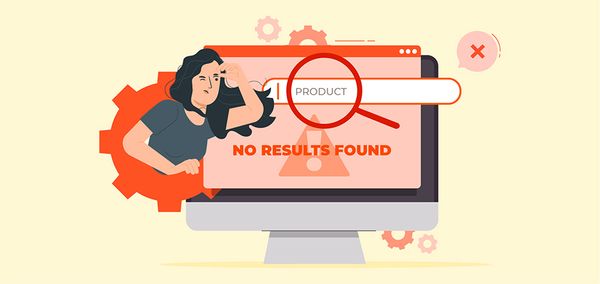6 Best Blog Formatting Tips to Keep Your Readers to Stay

Formatting plays a significant role in keeping the readers engaged with your blog post. No wonder you ever noticed someone landed on your blog posts and clicked away just after a few seconds to move to another blog without even reading your blog articles. It happens with great writers too, who tend to post thoughtful blogs only. It is disheartening, but what if we will suggest the best formatting ideas to make it more appealing and organised? Also, the best steps to cover the news and any information in a way that you could increase the likelihood that the visitors will stay a bit longer and will read blogs enthusiastically.
Blog formatting is indeed the most potent factor, and the more beautifully it is arranged, the larger number of readers will read it more often and more completely. And yes, it boosts your search engine rankings and garners more social media shares.
6 Simple Steps to Format Your Blog Post
A collection of blog formatting recommendations is provided here, organised into five simple phases. Each is a tried-and-true best practice, and you'll see we employ several of them directly in this post.
1. Consider Writing Shorter Paragraphs
If you usually write formal documents, writing fewer paragraphs may feel strange at first.
Shorter paragraphs will increase the amount of whitespace in your blog entries. Whitespace is the area surrounding and between your content. The text becomes cramped when there isn't enough spacing in your articles. A lack of whitespace makes it difficult for your reader to focus and read your entire text.
There is no set length for paragraphs; however, ranging from 1-3 sentences works well for maintaining a decent mix of whitespace.
2. Improve Your Writing Style
When you master your writing style, you'll be able to keep your readers on your site for longer since they won't want to stop reading. The longer you can maintain your readers' attention, the more probable they will convert. Have you ever found yourself clicking from article to article on someone else's site because their writing has captivated you?
| Get Started Now to Grow Your Online Business with the Best AliExpress Dropshipping Tool - DSers! |
On the other hand, I'm sure you've quickly hit the back button since anything you were reading made you feel as if it wasn't meant for you.
You'll need to know your audience and what they want to read.
Are they searching for something formal and severe? Or do they favour lighthearted conversational pieces? When you improve your writing style, you'll be able to boost the number of people who stay above the 15-second point I stated before.
3. Use Appropriate Headers
Headings are an excellent method to break up your material, offer spacing, and assist your reader in absorbing important information from your post.
By dividing your post into appropriate sections using headers, your reader will be able to make a rapid scan and (hopefully) determine whether to continue reading.
Your headlines should be clear and simple, informing the reader of what they will read in the following paragraphs.
Headings aren't only good for your readers; search engines love them (when used right), so let's go over semantic headers quickly, so you know whether you're utilising them correctly.
Search engines prefer that you structure your headers in a certain way for SEO purposes.
Here are the examples of headings:
- H1
- H2
- H3
- H4
- H5
To grab the readers' attention, you need to classify your title in an H1 heading and make sure your blog contains only one H1 heading only. Likewise, if you trust WordPress for your blog, the theme included on WordPress must apply the H1 heading to your blog title; therefore, you will not stress about this, and “heading 1” can be ignored.
How to Arrange Article into Headings:
As an added benefit, headings have more SEO weight than paragraph content, so attempt to put some of your keywords into your headers if feasible.
- Headings give support to your article, keeping it in proper order and hierarchical structure. Still confused? Okay, let's understand the key to ranking high with an example; the first heading should be marked as the H2 heading. And suppose if your H2 labelled section needs subheadings to explain the thoughts more precisely, it must be written under an H3.
- Similarly, if you want to add subheadings under the H3 heading (I believe now you got us where we are going to land up), using H4 will help you to give perfect formatting to your blog.
4. Split up Text with Bullet Points
Bullet points are great for condensing large paragraphs with a lot of information into bite-sized content that your readers can consume quickly. Furthermore, if your readers are skimming, the contrast between the bullet points and the paragraph content will stand out, ensuring they do not miss any vital information.
5. Examine Your Typography and Colour Scheme
While you don't have idea about designing, the following design elements will enhance the readability of your blog posts:
- Typography
- Colours
The typefaces on your website are the typography of your blog. Certain typefaces are ideal for websites, while others are difficult to read. You should also take into consideration the perfect size of your text. If it's too small, your viewers may click away if they can't read it. A fast and simple test invites someone to visit your site and tell you whether they have difficulty reading it.
6. Highlight Your Call to Action (CTA)
Your blog articles' CTA will direct your viewers to the next step. Should they use a contact form to reach out to you? Several CTAs may be included in your blog entries, and your responsibility is to ensure that the CTA is clear and simple.
People will always scan your material and not read it in its full capacity, which is good! Make your CTA stand out so that even people who are scrolling through will see it and maybe act on it.
Final Touch to the Blog
When you go back and edit your content, it's easy to overlook little mistakes. Grammarly is a wonderful tool (with a free plan and regular discounts) that may function as your personal editor, catching faults you would have missed otherwise. It's almost time to publish your article once you've modified it. But not until you perform a few more tests on it. Allow someone you trust to scan your work, or do it yourself and see what you can glean from it in about 15 seconds.
Put yourself in the position of someone who is just discovering your content. Are 15 seconds enough to acquire the necessary information and respond to your reader's question? Do you think you'll be able to persuade them to keep reading?
Do you still seek evidence this advice works?
You are still on this page :).
Summing Up
We believe the picture of great formatting is now evident in your mind. And all the ingredients are now in your toolbox after this precise reading to make it more scannable and reader-friendly.
Improving the style of your blog articles can encourage readers to read more of your material and stay on your site for more extended periods of time. By following the guidelines above, you will boost your audience's chance to digest your material and become devoted readers!













 Company
Company
 Why Choose DSers
Why Choose DSers
 Blog
Blog
 Help Center
Help Center




 Live Chat
Live Chat